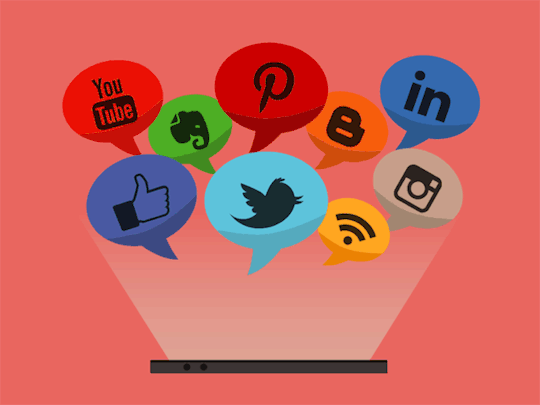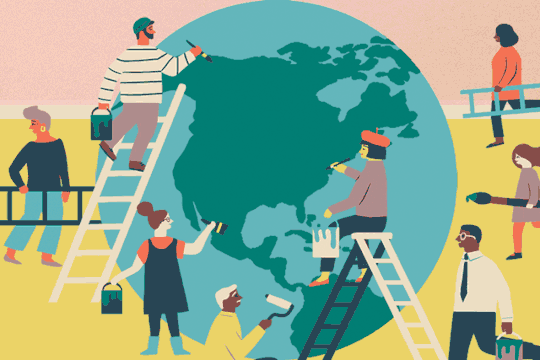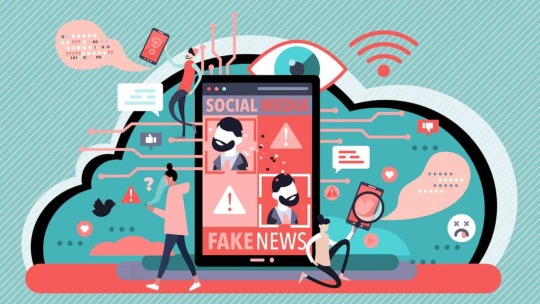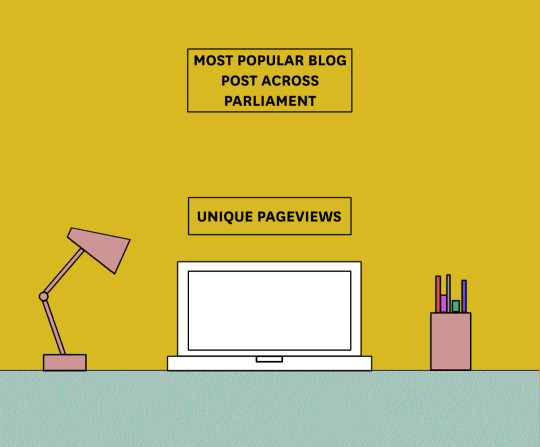Don't wanna be here? Send us removal request.
Text
in the wake of the global Covid-19 pandemic, what would be the potential consequences if governments around the world follow in China's footsteps and start to take a step towards more surveillance?
#week11 #MDA20009
In the wake of the global Covid-19 pandemic, what would be the potential consequence if governments around the world follows in China's footsteps and start to take a step towards more surveillance.

Introduction
The global Covid-19 pandemic has had a profound impact on societies around the world. One of the most notable changes has been the increased use of surveillance technology by governments. In China, for example, the government has used surveillance cameras and other technologies to track the movement of people and monitor their behavior.
This increase in surveillance has raised concerns about the potential for governments to abuse these technologies. Some critics argue that increased surveillance could lead to a loss of privacy and civil liberties, Others worry that surveillance could be used to suppress dissent and control the population (Hiscott et.al 2020).
Potential Consequences of Increased Surveillance
There are a number of potential consequences if governments around the world follow in China's footsteps and start to take a step towards more surveillance. Some of these consequences include:
• Loss of privacy: Increased surveillance could lead to a loss of privacy for individuals. Governments could use surveillance technology to track people's movements, monitor their online activity, and collect data on their personal lives.
• Suppression of dissent: Surveillance could be used to suppress dissent and control the population. Governments could use surveillance to identify and track individuals who are critical of the government. They could also use surveillance to intimidate and silence protestors.
• Increased social control: Surveillance could be used to increase social control. Governments could use surveillance to monitor the behavior of individuals and enforce social norms. They could also use surveillance to identify and punish individuals who violate social norms.
(Jones, Palumbo & Brown 2021).

The Chinese Surveillance State
China has one of the most extensive surveillance systems in the world. The government uses a variety of technologies to track the movement of people and monitor their behavior. These technologies include:
• Facial recognition: The Chinese government uses facial recognition technology to identify individuals in public places. This technology is used to track people's movements, monitor their behavior, and identify potential criminals.
• Mass surveillance: The Chinese government uses mass surveillance to monitor the online activity of its citizens. This includes monitoring social media posts, email messages, and internet searches.
• Data collection: The Chinese government collects a vast amount of data on its citizens. This data includes information on people's personal lives, financial information, and travel records.
(Khalifa et.al 2021).
The Chinese government has defended its use of surveillance technology, arguing that it is necessary to protect public safety. However, critics argue that the government is using surveillance to suppress dissent and control the population.

China Implications of Increased Surveillance
The increased use of surveillance technology in China has implications for countries around the world. If other countries follow in China's footsteps, it could lead to global surveillance state. This would have a number of negative consequences, including a loss of privacy, suppression of dissent, and increased social control.
It is important to note that there are also potential benefits to increased surveillance. For example, surveillance technology can be used to prevent crime and terrorism. However, it is important to weigh the potential benefits of surveillance against the potential risks (Onyeaka, Anumudu & Mbaegbu 2021).
Conclusion
The global Covid-19 pandemic has raised concerns about the potential for governments to abuse surveillance technology. It is important to have a public debate about the use of surveillance technology in order to ensure it is used in a responsible and ethical manner.
In addition to the above, I would also like to add the following points:
• The use of surveillance technology is a complex issue with no easy answers. There are both potential benefits and risks to increased surveillance.
• It is important to have a public debate about the use of surveillance technology in order to ensure that it is used in a responsible and ethical manner.
• Governments should be transparent about their use of surveillance technology and should only use it when it is necessary and proportionate.
• Individuals should be aware of their rights and should take steps to protect their privacy.
Cites
Hiscott, J, Alexandridi, M, Muscolini, M, Tassone, E, Palermo, E, Soultsioti, M & Zevini, A 2020, 'The global impact of the coronavirus pandemic', Cytokine Growth Factor Rev, 28 May, viewed 22 November 2023, <https://www.ncbi.nlm.nih.gov/pmc/articles/PMC7254014/>.
Jones, L, Palumbo, D & Brown, D 2021, 'Coronavirus: how the pandemic has changed the world economy', Paths to Success, 24 January, viewed 22 November 2023, <https://www.bbc.com/news/business-51706225>.
Khalifa, S, Swilam, MM, El-Wahed, A, Du, M, El-Seedi, HH, Kai, G, Masry, S, Abdel-Daim, MM, Zou, X, Habibi, MF, Alshamif, SM & El-Seedi, H 2021, 'Beyond the pandemic: COVID-19 pandemic changed the face of life', International Journal of Environmental Research and Public Health, vol. 18, no. 11, viewed 22 November 2023, <https://www.ncbi.nlm.nih.gov/pmc/articles/PMC8197506/>.
Onyeaka, H, Anumudu, CK & Mbaegbu, P 2021, 'COVID-19 pandemic: a review of the global lockdown and its far-reaching effects', Science Progress, 1 June, viewed 22 November 2023, <https://journals.sagepub.com/doi/10.1177/00368504211019854>.
1 note
·
View note
Text
Dismantling Toxicity: Unveiling the Challenges Faced by Marginalized Groups in Gaming Communities
In the vast realm of online gaming, where pixels clash and virtual worlds come alive, a disconcerting reality has been unfolding. Gaming communities, once heralded as sanctuaries for shared passion and camaraderie, are increasingly marred by toxicity. While this issue affects players across the spectrum, it has a disproportionately severe impact on women, members of the LGBT communities, and ethnic minorities. In this blog post, we'll navigate through the disconcerting trends, shed light on the experiences of marginalized groups, and discuss potential strategies to foster a more inclusive gaming environment (Sevelius et. al 2020).

(Mary 2020).
The Growth of Toxicity: A Harsh Reality
Gaming, a global phenomenon that transcends boundaries, has undeniably thrived on the connections forged in virtual spaces. However, as the community has grown, so too has the dark underbelly of toxicity. For some, playing a game has transformed from a leisurely pursuit into a gauntlet of harassment and discrimination (McCarty, Borgert & Burgoon 2020).

(GIPHY n.d.).
Microaggressions and Macro Consequences
Microaggressions, those seemingly harmless comments or actions that carry subtle discriminatory undertones, are a pervasive issue in gaming communities. For women, these microaggressions might manifest as doubts about their gaming skills, a constant need to prove their legitimacy in a predominantly male domain. LGBT individuals might endure derogatory slurs and a barrage of offensive comments. Ethnic minorities face racial stereotypes and insensitivity, perpetuating a cycle of exclusion and alienation (Association for Psychological Science 2021).

(Unleashed 2021).
The Gender Gap: Stereotypes and Scepticism
“Breaking Controllers and Stereotypes: The Gender Gap in Gaming”
The gender gap in gaming remains a persistent issue. Despite the increasing number of women gamers, stereotypes and skepticism still plague female players. The assumption that gaming is a male-dominated activity persists, contributing to an environment where women often find themselves defending their right to be part of the gaming community. Initiatives aimed at breaking down these stereotypes and celebrating the diversity of gaming experiences are crucial for fostering inclusivity (Krienke 2023).

(Miller 2017).
LGBT Representation: Beyond Tokens and Caricatures
"Beyond the Rainbow: The Quest for Genuine LGBT Representation in Gaming"
While there have been positive strides in including LGBT characters in games, token representation and stereotyping are still prevalent. Authentic, well-rounded representation goes beyond adding a rainbow flag; it involves integrating diverse narratives that reflect the reality of LGBT individuals. This representation not only enriches storytelling but also sends a powerful message of acceptance and visibility (Russell & Fish 2016).

(https://giphy.com/search/rainbow-days)
Ethnic Diversity: More Than Just Pixels on a Screen
"Beyond Pixels: The Imperative of Ethnic Diversity in Gaming"
Ethnic diversity in gaming is another facet that demands attention. Token characters often fall short of true representation, leading to a lack of authentic inclusion. The gaming industry must move beyond surface-level diversity and embrace narratives that authentically represent the experiences of individuals from diverse ethnic backgrounds (Flanagin, Kendall-Taylor & Bibbins-Domingo 2023).

(Adeline & Jotangia n.d.)
Moderation Matters: Empowering the Community
"Keyboard Warriors No More: The Power of Community Moderation"
Community-driven moderation can be a linchpin in tackling toxicity. Empowering players to report and address instances of harassment, coupled with the strict enforcement of anti-toxicity policies by game developers, can contribute to creating safer and more inclusive spaces. The responsibility doesn't solely rest on developers; it's a collective effort to cultivate a positive gaming environment (Shafiei 2023).

Education and Advocacy: A Catalyst for Change
“Respawn, Rethink, Respect: The Role of Education in Gaming Communities”
Education is a potent tool for change. Initiatives that raise awareness about the diverse gaming community, foster empathy, and provide resources for both players and developers can pave the way for a more inclusive future. Advocacy for inclusivity within the gaming industry can encourage positive change from the inside out.
Conclusion: Levelling Up Together
As we navigate the ever-evolving landscape of gaming, it's imperative to confront the toxicity that threatens to undermine the essence of these virtual communities. Recognizing the unique challenges faced by women, LGBT individuals, and ethnic minorities is the first step toward creating a gaming environment that is truly for everyone. By dismantling stereotypes, advocating for authentic representation, promoting community-driven moderation, and fostering education, we can collectively level up the gaming experience for all. It's time to build a gaming community that not only embraces diversity but thrives on it, where every player feels welcome, respected, and free to enjoy the virtual worlds they inhabit.
List of References
Adeline, J & Jotangia, J n.d., Ethnic & cultural diversity: The C.A.R.E framework & Alpha's journey, Alpha, viewed 15 November 2023, <https://alphafmc.com/blog/2021/03/02/ethnic-cultural-diversity-the-c-a-r-e-framework-alphas-journey/>.
Association for Psychological Science 2021, Current understandings of microaggressions: impacts on individual and society, Association for Psychological Science, viewed 13 November 2023, <https://www.psychologicalscience.org/news/releases/2021-sept-microaggressions.html>.
Flanagin, RN Kendall-Taylor, J & Bibbins-Domingo, K 2023, 'Guidance for authors, peer reviewers, and editors on use of AI, language models, and chatbots', Artificial Intelligence Resource Centre 27 July, viewed 15 November 2023, <https://jamanetwork.com/journals/jama/fullarticle/2807956>.
GIPHY (n.d.), Batman Facepalm GIF by WE tv - Find & Share on GIPHY, Giphy, viewed 13 November 2023 <https://giphy.com/embed/3xz2BLBOt13X9AgjEA>.
Krienke, H 2023, 'Amidst, by, near, with: locating recovery and forgetting in the shadow of COVID', Literature and Medicine, vol. 41, no. 1, viewed 13 November 2023, <https://muse.jhu.edu/article/911439/summary>.
Mary 2020, Top-rated nonprofits serving marginalized groups, Great Nonprofits, viewed 13 November 2023, <https://blog.greatnonprofits.org/marginalized-groups-top-rated-nonprofits-offering-support/>.
McCarty, LS, Borgert, CJ & Burgoon, LD 2020, 'Evaluation of the inherent toxicity concept in environmental toxicology and risk assessment', Environmental Toxicology and Chemistry, vol. 39, no. 12, viewed 13 November 2023, <https://www.ncbi.nlm.nih.gov/pmc/articles/PMC7756858/>.
Miller, CC 2017, 'Mother's Pay', The gender pay gap is largely because of motherhood, 13 May, viewed 14 November 2023, <https://www.nytimes.com/2017/05/13/upshot/the-gender-pay-gap-is-largely-because-of-motherhood.html?rref=collection%2Fsectioncollection%2Fupshot&action=click&contentCollection=upshot®ion=rank&module=package&version=highlights&contentPlacement=1&pgtype=sectionfront&_r=0&smid=tw-upshotnyt&smtyp=cur>.
Russell, ST & Fish, JN 2016, 'Mental health in lesbian, gay, bisexual, and transgender (LGBT) youth', Annu Rev Clin Psychol, 28 March, viewed 15 November 2023. <https://www.ncbi.nlm.nih.gov/pmc/articles/PMC4887282/>.
Sevelius, JM, Gutierrez-Mock, L, Zamudio-Haas, S, McCree, B, Ngo, A, Jackson, A, Clynes, C, Venegas, L, Salinas, A, Herrera, C, Stein, E, Operario, D & Gamarel, K 2020, 'Research with marginalized communities: Challenges to continuity during the COVID-19 pandemic', AIDS Behav, vol. 24, no. 7, viewed 13 November 2023, <https://www.ncbi.nlm.nih.gov/pmc/articles/PMC7228861/>.
Shafiei, M 2023, Unveiling the power of keyboard warriors: Navigating the digital discourse, LinkedIn, viewed 15 November 2023, <https://www.linkedin.com/pulse/unveiling-power-keyboard-warriors-navigating-digital-mahdi-shafiei/>.
Unleashed 2021, Microaggression - the hidden cause of stress + pain within your community, Unleashed, viewed 13 November 2023, <https://www.unleashed.company/post/microaggressions-the-hidden-cause-of-stress-pain-within-your-company>.
2 notes
·
View notes
Text
Are Media Representations of Fans Fair? Experience of Fandom
#Week9 #MDA20009
Introduction
In a world where media dominates our lives, it's essential to reflect on how it portrays fans. Are the common depictions of fans as 'weird and 'overly emotional' fair, or are they merely stereotypes? In this blog post, we'll explore these stereotypes and discuss my own personal experience with fandom.

Section 1: Media Stereotypes of Fans
Media's Lens on Fandom
The media often portrays fans in a rather unflattering light. Think about TV shows where obsessive fans depicted as socially awkward or news sentimental that sensationalize fan reactions. These portrayals perpetuate stereotypes, making it seem like fandom is a realm of eccentricity (Fuschillo 2020).

Examples of Stereotypes
Consider instances in movies and television where fans are caricatured as fanatics, and their passion is ridiculed. The classic portrayal of a fan living in their parents' basement, surrounded by merchandise, and socially isolated is a stereotype that has been perpetuated for decades. News reports during major fan events might focus solely on 'crazed' fans, ignoring the diverse and passionate community that these events bring together (Fiske 2017).

The Impact of Stereotypes
These media stereotypes can be damaging. they contribute toa misconception that fandom is something to be ashamed of or that fans are somehow less 'normal'. This misrepresentation can lead to stigmatization and exclusion, making it challenging for individuals to express their passion openly (Stewart et.al 2021).

Section 2: Challenging the Stereotypes
Breaking the Mold
Thankfully, fans have been challenged these stereotypes, and they've been doing so in remarkable ways. They're actively disproving the misconception that the media perpetuates by showcasing their creativity, social activism, and positivity.

Fan Communities Making a Difference
One of the most powerful ways fans have challenged these stereotypes is by making a positive impact. For communities often 2come together for charitable causes. They organize fundraisers, donate to worthy charities, and use their shared love for a franchise or show to make a real-world difference. For example, "fandom charities" have raised millions of dollars for causes like disaster relief, children's hospitals, and environmental conservation (Mastromartino & Zhang 2020).
Campaigns organized by fans have also raised awareness for important causes. Whether it's advocating for social justice, raising awareness about a mental health issues, or supposedly LGBTQ+ rights, fan communities have been at the forefront of many meaningful campaigns. This leverage their passion and influence to bring about positive change.

Section 3: My Personal Fandom Experience
My Fandom Journey
My own journey as a fan has been nothing short of transformative. I fell in love with a particular show that resonates with me on a deep level. This show became more than just a form of entertainment, it was a source of inspiration, comfort, and a gateway to a whole new world of creativity.

Connections and Creative Expression
Being part of a fan community allowed me to connect with like-minded individuals who shared my passion. We discussed theories, analysed characters, and celebrated the show's milestone together. The sense of belonging within a community was a beautiful aspect of fandom.
Creativity played a significant role in my fandom experience. I started creating fan art, within fanfiction, and even participating in fan conventions. It was a way to express my love for the show and connect with others who felt the same way. The creative outlet that fandom provided was *incredibly fulfilling.

Section 4: The Diversity of Fandom
Fan Communities Are Diverse
One of the most significant misconceptions perpetuated by the media is the idea that fans are a monolithic group. In reality, fan communities are incredibly diverse. Fans come from all walks of life, and their passion can be a source of empowerment and identity.
Fandom is an inclusive space where people of different backgrounds, age, gender, and cultures come together over shared interests. This diversity adds depth and richness to fan communities, it's a place where you can find acceptance and understanding, ni matter who you are or where you come from (Cristofari & Guitton 2016).

References
Cristofari, C & Guitton, MJ 2016, 'Aca-fans and fan communities: An operative framework', Journal of Consumer Culture, vol. 17, no. 3, viewed 7 November 2023, <https://journals.sagepub.com/doi/10.1177/1469540515623608>.
Fiske, ST 2017, 'Prejudices in cultural contexts: shared stereotypes (gender, age) versus variable stereotypes (race, ethnicity, religion)', Perspect Psychol Sci, vol. 12, no. 5, viewed 7 November 2023, <https://www.ncbi.nlm.nih.gov/pmc/articles/PMC5657003/>.
Fuschillo, G 2020, 'Fans, fandoms, or fanaticism?', Journal of Consumer Culture, vol. 20, no. 3, viewed 7 November 2023, <https://www.researchgate.net/publication/322273679_Fans_Fandoms_or_Fanaticism>.
Mastromartino, B & Zhang, JJ 2020, 'Affective outcomes of membership in a sport fan community', Frontiers in Psychology, 8 May, viewed 7 November 2023, <https://www.ncbi.nlm.nih.gov/pmc/articles/PMC7225319/>.
Stewart, R, Wright, B, Smith, L, Roberts, S & Russel, N 2021, 'Gendered stereotypes and norms: a systematic review of interventions designed to shift attitudes and behaviour', Heliyon, vol. 7, no. 4, viewed 7 November 2023, <https://www.ncbi.nlm.nih.gov/pmc/articles/PMC8066375/>.
4 notes
·
View notes
Text
The Future of the Internet: Decentralized Networks and Crowdsourced Content
#MDA2009 #Week8

Introduction
As we navigate the digital landscape of the 21st century, the internet is undergoing a transformation. Decentralized networks are gaining traction, promising to reshape the way we access and share information. In this blog post, we'll explore the potential of decentralized networks and their role in emphasizing crowdsourced content and information, ultimately asking the question: Will decentralized networks become a bigger, more mainstream part of the internet?

Understanding Decentralized Networks
A Paradigm Shift
Before we delve into the future, it's important to understand what decentralized networks are and why they matter. These networks operate in stark contrast to the centralized model adopted by internet giants like Facebook and Google. In decentralized networks, control, and data management are distributed across a multitude of nodes, each acting as a mini-server contributing to the network's functionality (Alshaar 2023).

The Promise of Decentralization
Redefining Internet Principles
Decentralized networks offer a world of promises, including:
User Empowerment:
A fundamental shift of power back into the hands of users. With decentralized networks, individuals have more control over their data and digital identity.
2. Resilience:
These networks are inherently resilient to censorship and technical failures, thanks to their lack of a single point of control.
3. Enhanced Security:
Enhanced security through cryptographic protocols and peer-to-peer communication.
(Dick-Sagoe 2019)

Blockchain's Role in Decentralized Networks
The Foundation of Trust
Blockchain technology plays a pivotal role in many decentralized networks. It provides transparency and trust in transactions and data. Platforms like Ethereum and Polka dot are redefining the way information and content are exchanged, promising a more secure and transparent internet (Sarmah 2018).

Crowdsourced Content: The Heart of Decentralization
Community-Driven Information
Central to the concept of decentralized networks is the idea of crowdsourced content. Here's how it works:
1. Content Creation:
Users actively contribute by creating content in various forms, such as articles, videos, or applications.
2. Validation:
Instead of relying on centralized authorities, content is validated and curated by the community itself, ensuring a more democratic process.
3. Rewards:
Rewards*: Contributors are often rewarded with cryptocurrencies or tokens for their contributions, creating an incentive for quality content.
(Wazny 2017)

Challenges of Crowdsourcing
Ensuring Quality and Reliability
While crowdsourced content has immense potential, it also poses some challenges:
Quality Control:
Maintaining quality and accuracy can be a challenge when there is no centralized authority to fact-check information.
2. Misinformation:
The risk of spreading misinformation when there are no centralized gatekeepers to verify content.
3. Incentives:
Designing effective incentive mechanisms to encourage quality contributions and prevent spam.
(Bhatti, Gao & Chen 2020)

The Road Ahead: Mainstream Adoption
Can Decentralized Networks Go Mainstream?
The million-dollar question is whether decentralized networks will become a mainstream part of the internet. Several factors play into this:
User Adoption:
The more users embrace decentralized platforms, the closer they come to mainstream recognition.
2. Regulatory Challenges:
Government regulations and policies will play a significant role in shaping the future of decentralized networks.
3. Integration with Existing Services:
The ease with which decentralized networks integrate with the services we already use is crucial for their adoption.
(Kremenova & Gajdos 2019)

Conclusion
Shaping the Internet of Tomorrow
The rise of decentralized networks has the potential to redefine the very fabric of the internet. Emphasizing crowdsourced content and information, these networks may lead us towards a more democratic and user-centric digital environment. Yet, challenges remain, and the future of decentralized networks is uncertain. The journey towards decentralization may be slow and filled with hurdles, but it is a path worth exploring.
As users, we have the power to influence this transformation by embracing the principles of decentralization, supporting projects that align with these values, and actively participating in the creation of a more open and equitable internet.

List of References
Alshaar, AM 2023, 'Exploring the digital landscape: Opportunities, challenges, and strategies in digital entrepreneurship', International Journal of Entrepreneurship, vol. 27, no. 4, viewed 31 October 2023, <https://www.researchgate.net/publication/371540338_Exploring_the_Digital_Landscape_Opportunities_Challenges_and_Strategies_in_Digital_Entrepreneurship>.
Bhatti, SS, Gao, X & Chen, G 2020, 'General framework, opportunities and challenges for crowdsourcing techniques: A comprehensive survey', Journal of Systems and Software, vol. 167, no. 1, viewed 31 October 2023, <https://www.sciencedirect.com/science/article/abs/pii/S0164121220300893>.
Dick-Sagoe, C 2019, 'Deactualization for improving the provision of public services in developing countries: A critical review', Cogent Economics & Finance, vol. 8, no. 1, viewed 31 October 2023, <https://www.tandfonline.com/doi/full/10.1080/23322039.2020.1804036>.
Kremenova, I & Gajdos, M 2019, 'Decentralized networks: The future internet', Mobile Networks and Application, 6 January, viewed 31 October 2023, <https://link.springer.com/article/10.1007/s11036-018-01211-5>.
Sarmah, SS 2018, 'Understanding blockchain technology', Computer Science and Engineering, vol. 8, no. 2, viewed 31 October 2023, <https://www.researchgate.net/publication/336130918_Understanding_Blockchain_Technology>.
Wazny, K 2017, '"Crowdsourcing" ten years in: A review', Journal for Global Health, vol. 7, no. 2, viewed 31 October 2023, <https://www.ncbi.nlm.nih.gov/pmc/articles/PMC5735781/>.
1 note
·
View note
Text
Is Public Health Campaigns on Social Media More of a One-Way Communication Than a Conversation
#Week7 #MDA20009
In the digital age, social media platforms have emerged as powerful tools for public health campaigns. Government agencies, nonprofits, and health organizations use these platforms to raise awareness, share crucial information, and influence public behavior. However, a question arises: Are these campaigns truly fostering a two-way dialogue or merely serving as one-way communication channels? In this blog, we delve into the dynamics of public health campaigns on social media to explore whether they facilitate meaningful conversations or primarily disseminate information.

The Rise of Social Media in Public Health
Social Media's Transformative Role in Public Health
Social media platforms like Facebook, Twitter, and Instagram have become indispensable tools for public health organisations. They allow for mass communication, instant updates, and the ability to reach a diverse audience. These platforms enable health campaigns to engage with the public like never before (Kanchan & Gaidhane 2023).

Informing the Public
Public health campaigns leverage social media to distribute important information. For example, during COVID-19 pandemic, platforms were used to convey updates on infection rates, vaccine distribution, and safety guidelines. However, the e1fectiveness of these campaigns is not solely dependent on the information they provide but on how they engage the public (Chen & Wang 2021).

One-Way Communication: The Challenges
Broadcasting Messages
Public health campaigns on social media often resemble traditional advertising. They focus on broadcasting messages to a wide audience, which can be seen as a one-way communication approach. In this model, information flows from the campaign to the public without much room for interaction (Kapur 2018).

Lack of Engagement
One of the key challenges is the lack of genuine interaction. Many campaigns post content without actively encouraging comments or questions. This creates a sense of passivity, where the public is expected to receive information but not actively engage with it (Ruler 2018).

The Echo Chamber Effect
Another concern is the echo chamber effect, where campaigns target individuals who already agree with the message. This can reinforce existing or change the minds of those who hpld different views (Ma 2022).

Transitioning to Two-Way Communication
Interactive Content
To move away from one-way communication, public health campaigns needs to create interactive content. Polls, surveys, and quizzes can encourage users to participate actively. For instance, campaign on smoking cessation could share a quiz that assesses a user's readiness to quit and offers personalized advice (Weheba & Kader 2007).

Encouraging Questions and Feedback
Campaigns can also actively encourage users to ask questions and provide feedback. They can dedicate time for Q&A sessions or open forums where experts respond to inquiries. This approach not only informs but also fosters engagement

Incorporating Storytelling
Stories have a unique power to humanize public health issues. Sharing personal experiences, survivor stories, or testimonials can make campaigns relatable and encourage users to share their own stories and concerns.

Case Studies in Meaningful Conversations
The "Know Your Lemons" Breast Cancer Campaign
The "Know Your Lemons" campaign effectively utilizes two-way communication. It educates women about breast health through a conversation starter: a set of lemons representing different breast abnormalities. This interactive approach empowers women to ask questions, share concerns, and engage with the campaign's message actively (Yen et.al 2021).

The CDC's COVID-19 Twitter Chats
The Centres for Disease Control and Prevention (CDC) conducted Twitter chats during the pandemic. They provided a platform for experts to address public concerns and answer questions in real-time. These chats transformed their Twitter feed into a place for dialogue and information exchange (Lyu & Luli 2021).

The Balance: When One-Way Communication Is Appropriate
While striving for two-way communication is crucial, it's important to recognize that not all public health campaigns are suited for extensive conversation.
Emergency information
In crisis situations, such as natural disasters or disease outbreaks, rapid dissemination of information is paramount. During these times, one-way communication may be more appropriate to ensure that the public receives vital instructions without delay (Adu-Oppong 2014).

Factual information
When sharing straightforward, factual information like vaccination schedules, it may be more efficient to maintain one-way communication. Nevertheless, campaigns can always encourage users to seek more information through resources or helplines.

Conclusion
Public health campaigns on social media have the potential to be more than just one-way communication. They can foster meaningful conversations, educate the public, and create a sense of shared responsibility. However, to achieve this, campaigns need to actively engage with their audience, encourage questions, and embrace interactive content. By striking a balance between one-way communication and dialogue, public health campaigns can maximize their impact and effectively serve the public interest. In an age where misinformation and fear can spread rapidly, social media can be a powerful force for good when harnessed effectively.

References
Adu-Oppong 2014, 'Communication in the workplace: Guidelines for improving effectiveness', Global Institute of Research & Education, vol. 3, no. 5, viewed 24 October 2023, <https://www.researchgate.net/publication/304782482_COMMUNICATION_IN_THE_WORKPLACE_GUIDELINES_FOR_IMPROVING_EFFECTIVENESS>.
Chen, J & Wang, Y 2021, 'Social media use for health purposes: Systematic review', Journal of Media Internet Research, vol. 23, no. 6, viewed 23 October 2023, <https://www.ncbi.nlm.nih.gov/pmc/articles/PMC8156131/>.
Kanchan, S & Gaidhane, A 2023, 'Social media role and its impact on public health: A narrative review', Cureus, vol. 15, no. 1, viewed 23 October 2023, <https://www.ncbi.nlm.nih.gov/pmc/articles/PMC9925030/>.
Kapur, R 2019, Barriers to effective communication, ResearchGate, viewed 23 October 2023, <https://www.researchgate.net/publication/323794732_Barriers_to_Effective_Communication>.
Lyu, JC & Luli, GK 2021, 'Understanding the public discussion about the centers for disease control and prevention during the COVID-19 pandemic using Twitter data: Text mining analysis study', J Med Internet Res, 9 February, viewed 24 October 2023, <https://pubmed.ncbi.nlm.nih.gov/33497351/>.
Ma, Y 2022, 'Role of communication strategies in organizational commitment, mediating role of faculty engagement: Evidence from English language teachers', Frontiers in Psychology, 22 June, viewed 23 October 2023, <https://www.ncbi.nlm.nih.gov/pmc/articles/PMC9257226/>.
Ruler, BV 2018, 'Communication theory: An underrated pillar on which strategic communication rests', International Journal of Strategic Communication, vol. 12, no. 4, viewed 23 October 2023, <https://www.tandfonline.com/doi/full/10.1080/1553118X.2018.1452240>.
Weheba, D & Kader, MA 2007, 'The impact of communication in teaching: A two-way communication approach', Tourismos: An International Multidisciplinary Journal of Tourism, vol. 2, no. 1, viewed 23 October 2023, <https://www.researchgate.net/publication/47716235_The_impact_of_communication_in_teaching_A_two-way_communication_approach>.
Yen, MCM, Islam, T, Ellsworth-Beaumont, C, Dhillon, SK, Ganggayah, MD & Taib, NA 2021, 'The "Know your Lemons" tools: A strategy to improve breast cancer warning signs recognition in Malaysia', Journal of Education and Health Promotion, 29 July, viewed 24 October 2023, <https://www.ncbi.nlm.nih.gov/pmc/articles/PMC10506761/>.
#week7#MDA20009#PublicHealth#SocialMediaCampaign#HealthCommunication#OnlineHealthCampaign#HealthAwareness
1 note
·
View note
Text
The Double-Edged Sword of Social Media: Fake News and Propaganda in Activism and Protests
How might fake news and propaganda factor into the use of social media for activists and protesters (e.g. 5G technology causing COVID-19, US's anti-lockdown protests, Trump using the term 'Chinese virus')?
#Week6 #MDA20009
Introduction
In the digital age, social media has become a powerful tool for activists and protestors to amplify their voices and organize movements. However, this newfound power comes with a downside - the proliferation of fake news and propaganda. In this blog post, we'll explore how misinformation impacts social causes. with exampleds ranging from 5G conspiracy theories to anti-lockdown protests and the controversial term 'Chinese Virus'.

The Weaponization of Fake News
A Threat to Truth & Activism
Fake news is like a stealthy infiltrator in the realm of activism, posing a sever threat to both truth and the effectiveness if social movements. Misinformation, often disguised as credible information, can quietly seep into the discourse of activists, sowing seeds of doubt and discord. It not only blurs the lines between fact and fiction but also breeds confusion within the ranks of those striving for change. Social media platforms, the very tools that empower activists to reach vast audiences, paradoxically accelerate the spread of fake news, making it a formidable adversary. In this digital age, being aware of the menace is crucial, as it can create the foundations of genuine activism and compromise the pursuit of justice (Tong et.al 2020) (George, Gerhart & Torres 2022).

The 5G-COVID-19 Conspiracy Theory
A Viral Falsehood
One Glaring example of the potency of fake news on social media is the baseless 5G technology and COVID-19 conspiracy theory. This unfounded idea erroneously posited that 5G technology was somehow responsible for the global pandemic. Fuelled by sensationalism and shared relentlessly on platforms like Twitter and Facebook, these false claims gained alarming traction. The rapid spread of this misinformation showcased the power of social media in amplifying unverified narratives. This episode underscores the critical importance of nurturing critical thinking and robust fact-checking habits, serving as a stark reminder that in the digital age, discerning truth from fiction is a responsibility we all bear (Ahmed et.al 2020).

Anti-Lockdown Protests: A Breeding Ground for Misinformation
Protests in the Age of Misinformation
The anti-lockdown protests vividly illustrate the impact of fake news and propaganda in shaping real-world events. Social media played a pivotal role in not only mobilizing these protests but also disseminating misleading information about the pandemic. Misguided claims about the virus' severity, lockdown measures, and their economic consequences galvanized protestors. However, these gatherings, fuelled by misinformation, often ignored the health risks and undermined collective efforts to curb the virus' spread. The potential consequences of such protests are dire, as they can lead to increase infections, overwhelm healthcare systems, and prolong the very restrictions they sought to oppose, demonstrating how misinformation can fuel misguided activists (Ozduzen, Ozgul & Ianosev 2023).

The 'Chinese Virus' Terminology
The Power of Language in Activism
The controversy surrounding the term 'Chinese virus,' notably used by former President Trump, underscores the potent role of language as a propaganda tool. Such rhetoric can stigmatize and perpetuate discrimination against Asian communities. By labelling the virus in this manner, it subtly shifted blame and fuelled xenophobic sentiments, casting a shadow over global perceptions. Language, in activism, wields immense influence; it can unite or divide, empower or oppress. In this case, it underscored the need for responsible and inclusive language in social justice movements, emphasizing how words can shape narratives and perceptions, both locally and on a global scale (Kania 2022) (Darling-Hammond 2020).

Combining Misinformation in Activism
The Need for Media Literacy
To combat misinformation, activists must embrace media literacy. Encourage critical thinking, fact-checking, and responsible sharing on social media platforms. Point them toward organizations and resources like Snopes, FactCheck.org, and MediaWise, which empower individuals with the skills needed to navigate today's information landscape wisely (Adjin-Tettey 2022).

Conclusion
In the digital age, where social media serves as both a catalyst for activism and a breeding ground for misinformation, the nexus of truth and advocacy is at stake. Fake news, propaganda, and divisive language can undermine the very causes activists hold dear. From the 5G-COVID-19 conspiracy to anti-lockdown protests and the 'Chinese virus' controversy, the lessons are clear. We must fortify ourselves with media literacy, critical thinking, and fact-checking to discern fact from fiction. By doing so, we can ensure that our activism remains grounded in truth and empathy, amplifying voices for change while safeguarding the integrity of the causes we champion.

References
Adjin-Tettey, TD 2022, 'Combining fake news, disinformation, and misinformation: Experimental evidence for media literacy education', Cogent Arts & Humanities, vol. 9 no. 1, viewed 10 October 2023, <https://www.tandfonline.com/doi/full/10.1080/23311983.2022.2037229>.
Ahmed, W, Vidal-Alaball, J, Downing, J & Segul, FL, 'COVID-19 and the 5G conspiracy theory: Social network analysis of Twitter data', J Med Internet Res, vol. 22, no. 5, viewed 10 October 2023, <https://www.ncbi.nlm.nih.gov/pmc/articles/PMC7205032/>.
Darling-Hammond, S, Michael, EK, Allen, AM, Chae, DH, Thomas, MD, Nouyen, TT, Mujahid, MM & Johnson, RC 2020, 'After the Chinese Virus went viral: Racially charged coronavirus coverage and trends in bias against Asian Americans', Health Educ Behav, vol. 47, no. 6, viewed 10 October 2023, <https://www.ncbi.nlm.nih.gov/pmc/articles/PMC7488172/>.
George, J, Gerhart, N & Torres, R 2022, 'Uncovering the truth about fake news: A research model grounded in multi-disciplinary literature', Journal of Management Information Systems, vol. 38, no. 4, viewed 10 October 2023, <https://www.tandfonline.com/doi/full/10.1080/07421222.2021.1990608>.
Kania, U 2022, 'Snake flu, killer bug, and Chinese virus: A corpus-assisted critical discourse analysis of lexical choices in early UK press coverage of the COVID-19 pandemic', 10 November, viewed 10 October 2023, <https://pubmed.ncbi.nlm.nih.gov/36483982/>.
Ozduzen, O, Ozgul, BA & Ianosev, B 2023, 'Institutions of governance are all corrupted: anti-political collective identity of anti-lockdown protests in digital and physical spaces', Social Movement Studies, 23 August, viewed 10 October 2023, <https://www.tandfonline.com/doi/full/10.1080/14742837.2023.2246920>.
Tong, C, Gill, H, Li, J, Valenzuela, S & Rojas, H 2020, 'Fae news is anything: They say! - Conceptualization and weaponization of fake news among the American public', Mass Communication and Society, vol. 23, no. 5, viewed 10 October 2023, <https://www.tandfonline.com/doi/abs/10.1080/15205436.2020.1789661>.
4 notes
·
View notes
Text
Twitter’s Trump Ban: Navigating the Fine Line Between Free Speech and Moderation
#MDA20009 #Week5
Twitter's censure of Donald Trump while he was still a President a violation of "free speech" principles and democracy?
Twitter has become a major platform for political databases in recent years. its unique features make it well-suited for this purpose. The suspension of Donald Trump from Twitter in early 2021 ignited a fiery debate about free speech and social media moderation. Some argue that it was an essential move to curb incitement, while others view it as an infringement on free speech rights and a threat to democracy. In this blog, we'll explore the complexities of this issue, balancing the principles of free speech with the necessity of content moderation on social media platforms Twitter has been used to facilitate political debate on a wide range of issues, including elections, public policy, and social movements. Twitter has also been used by political candidates and campaigns to connect with voters and share their messages
Social Media as Public Platforms
Twitter is a platform well-known for its real-time, meaning users can share their thoughts on current issues and events. The reason why this platform is widely used for political parties is because of the short form (280 words) limit on tweets. According to (Vliet, Tomberg & Uitermark 2020), Twitter, like other social media platforms, has become a global stage where political leaders communicate directly with the public. Trump's prolific use of Twitter blurred the lines between his personal expression and official statements. This raises questions about whether social media should be considered a public utility and how this impacts the notion of free speech.

The Power of Private Platforms
On the other hand, Twitter is a private company with its own terms of service. Critics argue that it has the right to moderate content that violates those terms. However, the sheer influence and reach of these platforms grant them immense power over public discourse (Davies, Donald & Grsy 2022). This power becomes especially significant when political leaders are involved. Twitter has been used to facilitate political debate on a wide range of issues, including elections, public policy, and social movements. For example, the #ArabSpring hashtag played a key role in organizing and mobilizing protesters during the Arab Spring uprisings. Twitter has also been used by political candidates and campaigns to connect with voters and share their messages (Chen, Deb & Ferrara 2021).

incitement vs. Free Speech
Twitter cited concerns about Trump's posts inciting violence as the reason for his suspension. This brings forth the debate over where the line between free speech and incitement should be drawn. Exploring the legal precedents and ethical considerations is crucial in understanding the rationale behind Twitter's decision (Gorenc 2022).

The Slippery Slope Argument
The "Slippery slope" argument concerning Twitter's suspension of Donald Trump revolved around the fear that such a move could establish a precedent with far-reaching consequences for free speech and democracy (Chiaro 2020).
First, Precedent for Censorship, critics argue that when a high-profile figure like Donald Trump is banned from a social media platform, it establishes a precedent. They worry that this precedent may embolden platform operators to engage in more extensive censorship, potentially targeting individuals or groups whose views are considered controversial or unpopular by the platform's management (All Things Considered 2017).
Second, Chilling Effect on Speech, This potential for expanding censorship can have a "a chilling effect" on free speech. It means that people may become hesitant to express their opinions freely on those platforms, fearing they might be subject to similar bans or restrictions. In such a climate, diverse viewpoints might be suppressed, leading to a stifling of public discourse (Kakutani 2017).
Third, Threat to Democracy, The concept is that when diverse voices are suppressed, it undermines the core principles of democracy, which rely on open and robust debate. Democracy thrives on the exchange of ideas, and if social media platforms limit this exchange, it could lead to an erosion of democratic values and the emergence of a more homogenized, polarized information environment (Brownstein 2023).
Fourth, Arbitrary Moderation, critics argue that these decisions about who to ban or restrict are often perceived as arbitrary. Without clear and consistent guidelines for moderation, there's a risk that decisions could be influenced by the biases or preferences of platform executives, which would further erode trust in these platforms as neutral and fair spaces (Alizadeh et.al 2022).
Finally, Unintended Consequences, the slippery slope argument highlights that well-intentioned actions like banning Trump can have unintended consequences. It might drive users with extreme or controversial views to alternative platforms that are less regulated, potentially fostering more extreme echo chambers (Roberts 2020).

Alternate Platforms and Echo Chambers
The Trump ban also led to the emergence of alternative platforms that cater to specific ideological groups. This can exacerbate the problem of echo chambers and polarized discourses, as people flock to platforms that align with their views. Discussing the consequences of such fragmentation is essential.

In conclusion, Twitter's suspension of Donald Trump exemplifies the ongoing struggle between free speech principles and content moderation in the digital age. While it raises valid concerns about the power of private platforms and the slippery slope of censorship, it also highlights the need for transparent and consistent guidelines to navigate this complex landscape without compromising demographic values.
List of References
Alizadeh, M, Gilardi, F, Hoes, E, Kluser, KJ, Kubli, M & Marchal, N 2023, 'Content moderation as a political Issue: The Twitter discourse around Trump's ban', Journal of Quantitative Description: Digital Media, 23 September, viewed 4 October 2023, <https://www.fabriziogilardi.org/resources/papers/Content-Moderation-Political-Issue.pdf>.
All Things Considered 2017, 'Does Trump's slippery slope argument about confederate status have merit?', Politics, 16 August, viewed 4 October 2023, <https://www.npr.org/2017/08/16/543973293/does-trumps-slippery-slope-argument-about-confederate-statues-have-merit>.
Brownstein, R 2023, 'Trump's threat to democracy is now systemic', Ideas, 2 August, viewed 4 October 2023, <https://www.theatlantic.com/ideas/archive/2023/08/donald-trump-indictment-gop-jan-6/674895/>.
Chen, E, Deb, A & Ferrara, E 2021, ‘#Election2020: the first public Twitter dataset on the 2020 US Presidential election’ Journal of Computational Social Science, 2 April, viewed 3 October 2023, <https://link.springer.com/article/10.1007/s42001-021-00117-9>.
Chiaro, AC 2020, 'The logical fallacies of Donald Trump (With video)', Logical Fallacies, 14 October, viewed 4 October 2023, <https://philosophymt.com/a-trumpian-overture-of-logical-fallacies/>.
Davies, A, Donald, B & Gray, M 2023, 'The power of platforms - precarity and place', Cambridge Journal of Regions, Economy and Society, vol. 16, no. 2, viewed 4 October 2023, <https://academic.oup.com/cjres/article/16/2/245/7176240>.
Gorenc, N 2022, 'Hate speech or free speech: an ethical dilemma?', International Review of Sociology, vol. 32, no. 3, vieewed 4 October 2023. <https://www.tandfonline.com/doi/full/10.1080/03906701.2022.2133406>.
Kakutani, M 2017, 'Donald Trump's chilling language, and the fearsome power of words', Inauguration 2017, 21 January, viewed 4 October 2023, <https://www.vanityfair.com/news/2017/01/donald-trumps-chilling-language-and-the-power-of-words>.
Roberts, T 2020, 'Trump's legacy may be unintended consequences', President Donald Trump speaks at a campaign rally at Cecil Airport in Jacksonville, Florida, 24 September, viewed 4 October 2023, <https://www.ncronline.org/opinion/guest-voices/trumps-legacy-may-be-unintended-consequences>.
Vliet, L, Tomberg, P & Uitermark, J 2020, ‘The Twitter parliamentarian database: Analyzing Twitter politics across 26 countries’, Research Article, 16 September, viewed 3 October 2023, <https://journals.plos.org/plosone/article?id=10.1371/journal.pone.0237073>.
#MDA20009#Week5#TwitterBan#FreeSpeech#SocialMedia#Democarcy#ContentModeration#DigitalAge#CensorshipDebate#OnlineDiscourse
1 note
·
View note
Text
The Future of Blogging: How to Stand Out In the Age of Social Media
#MDA20009 #Week4
Is blogging still relevant in the age of TikToks and Instagram?
TikTok and Instagram have become increasingly popular in recent years, and many people wonder if blogging is still relevant in the age of these short-form video platforms. the answer is yes, blogging is still relevant, but it has evolved in recent years to meet the changing needs of audiences (AIContentfy 2023).
Blogging is still relevant as it has many benefits such as, firstly, Reaching a Wider Audience. This is because blogging can be indexed by search engines, which means that people can find your blog posts when they search for relevant topics (Zimha & Gasparyan 2021). This means that you can reach a wider audience than you could with social media alone.
Secondly, blogging Builds Authority and Expertise, meaning, when you regularly publish high-quality blog posts on a specific topic, you establish yourself as an expert in that field. This can help you attract clients, customers, or other opportunities (Schmidt 2007).
Thirdly, blogging Drives Traffic to Your Website, if you have a website, you can use your blog to drive traffic to it. This can help you to increase your website's visibility and search engine making (Hans et.al 2021).
Lastly, blogging Generates Leads and Sales, you may use blog to generate leads and sales by promoting your products or services in your blog to generate leads and sales by promoting your products or services in your blog posts. You can also use your blog to collect email addresses from your readers, which you can then use to send them marketing emails (Swieczak & Lukowski 2016).
Despite all the benefits of blogging, to blog successfully in the age of TikTok and Instagram, you need to focus on creating high-quality, long-form content that is informative and engaging. It is important to also make sure to promote the blog posts on social media to reach a wider audience (Shahbaznezhad, Dolan & Rashidirad 2022).
Some tips for blogging successfully in the age of TikTok and Instagram includes the following, first, Choosing a Niche. Choosing a niche that you are passionate about and that you have some expertise in, this will make it easier for to write high-quality content that your readers will find valuable (Chukwuemeka 2023).

Second, Writing in a Long-Form Content, long-form content is more likely to be indexed by by search engines and to rank higher in search results. it is also more likely to engage your readers and keep them coming back for more (Voorveld et.al 2018).

Third, it is important to Promote Your Blog Posts on Social Media, sharing your blog posts on social media to reach a wider audience and be sure to use relevant hashtags and to tag other users who might be interested in your content (Gale 2021).

Lastly, Use Images and Videos, using images and videos can make your blog posts more visually appealing and engaging and be sure to use high-quality images and videos that are relevant to your topic. When choosing images and videos for your blog posts be sure to use relevant topics and avoid using stock photos and videos that do not have anything to do with your topic. Also, be sure to give credit to the creators of any images or videos that you have used.

Once you have a blog set up, you can start writing and publishing blog posts. it is important to choose interesting topics that the target audience will care about. It is also important to do research and make sure your content is accurate and up-to-date. Write in a clear and concise style and use images and videos to break up your text and make your posts more visually appealing. Proofread your posts carefully before publishing them.
In conclusion, blogging is still relevant in the age of TikTok and Instagram, but it has evolved in recent years to make the changing needs of audiences. To blog successfully, you need to focus on creating high-quality, long-form content that is informative and engaging. You should also make sure to provide your blog posts on social media to reach a wider audience.
List of References
AIContentfy 2023, The impact of social media, AIContentfy, viewed 29 September 2023, <https://aicontentfy.com/en/blog/impact-of-social-media-on-blogging>.
Chukwuemeka, ES 2023, ‘How to choose a blog niche: 6 effective tips’, Tech Updates, 12 March, viewed 30 September 2023, <https://bscholarly.com/how-to-choose-a-blog-niche/>.
Gale 2021, Social media topic overview, Gale, viewed 30 September 2023, <https://www.gale.com/open-access/social-media>.
Hans, S, Maqsad, S, Swami, AN & Kumar, A 2021, ‘A systematic review of blogging: Opportunities and challenges’, International Journal of Scientific Research in Computer Science Engineering and Information Technology, vol. 7, no. 3, viewed 30 September 2023, <https://www.researchgate.net/publication/351725158_A_Systematic_Review_of_Blogging_Opportunities_and_Challenges>.
Schmidt, J 2007, ‘Blogging practices: An analytical framework’, Journal of Computer-Meditated Communication, vol, 12, no. 4, viewed 30 September 2023, <https://academic.oup.com/jcmc/article/12/4/1409/4583037>.
Shahbaznezhad, H, Dolan, R & Rashidirad, M 2022, ‘The role of social media content format and platforms in users’ engagement behavior’, Journal of Interactive Marketing, vol. 53, no. 1, viewed 30 September 2023, <https://journals.sagepub.com/doi/full/10.1016/j.intmar.2020.05.001>.
Swieczak, W & Lukowski, W 2016, ‘Lead generation strategy as a multichannel mechanism of growth of a modern enterprise’, MINIB, vol. 21, no. 3, viewed 30 September 2023, <https://www.researchgate.net/publication/311575642_Lead_generation_strategy_as_a_multichannel_mechanism_of_growth_of_a_modern_enterprise>.
Voorveld, HA, Noort, GN, Muntinga, DA & Bronner, F 2018, Journal of Advertising, vol. 47, no. 1, viewed 30 September 2023, <https://www.tandfonline.com/doi/full/10.1080/00913367.2017.1405754>.
Zimha, O & Gasparyam, AY 2021, ‘Social media platforms: a primer for researchers’, Reumatologia, vol. 59, no. 2, viewed 30 September 2023, <https://www.ncbi.nlm.nih.gov/pmc/articles/PMC8103414/>.
#MDA20009#Week4#Blogging#contentmarketing#socialmedia#Digitalmarketing#Marketing#Business#Entrepreneur
3 notes
·
View notes